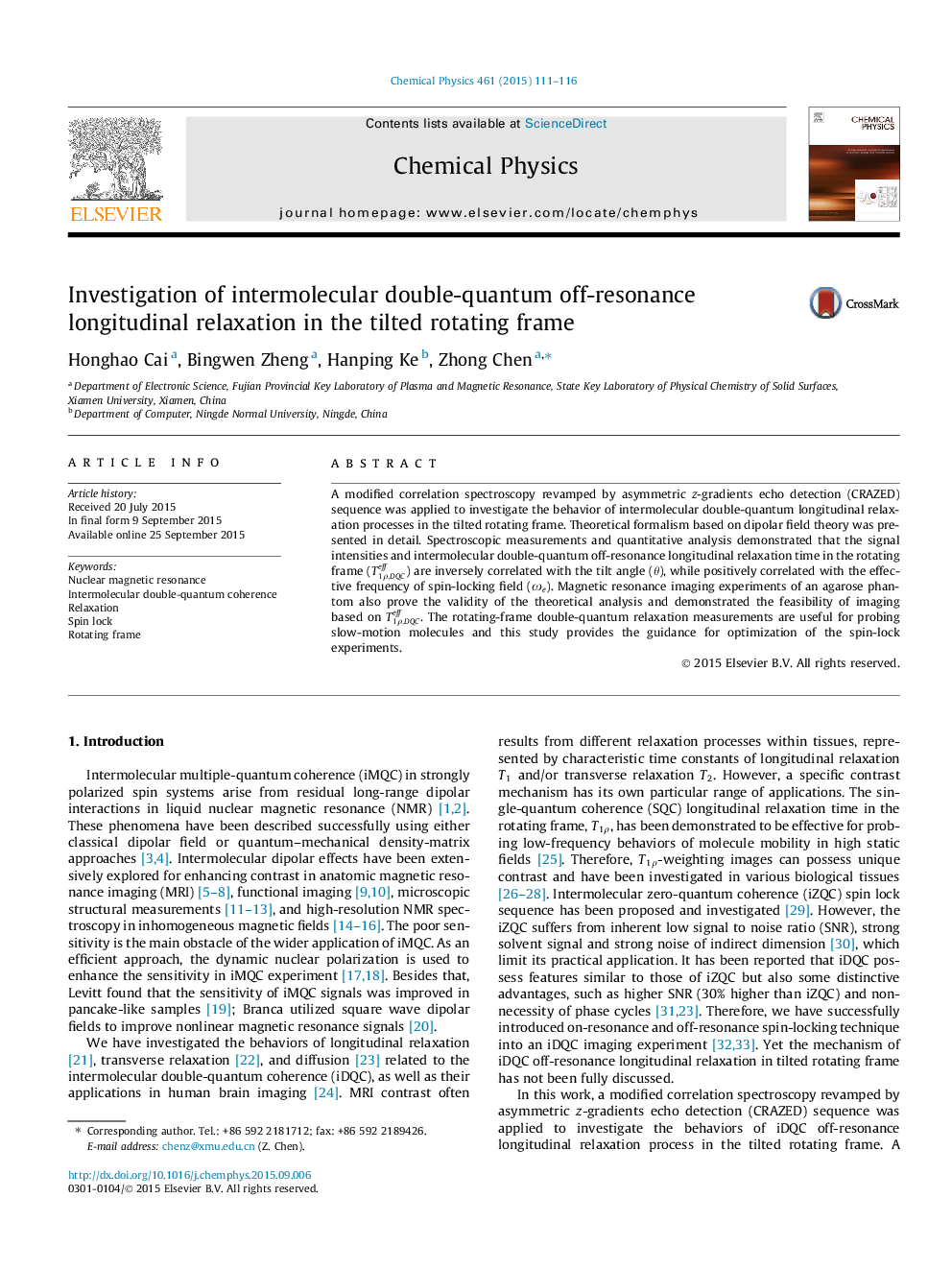| Article ID | Journal | Published Year | Pages | File Type |
|---|---|---|---|---|
| 5373144 | Chemical Physics | 2015 | 6 Pages |
â¢The behaviors of iDQC off-resonance longitudinal relaxation process in the tilted rotating frame are fully discussed.â¢The signal intensities under different spin-lock parameters are quantitative analyzed.â¢This study provides the guidance for optimization of the spin-lock experiments.
A modified correlation spectroscopy revamped by asymmetric z-gradients echo detection (CRAZED) sequence was applied to investigate the behavior of intermolecular double-quantum longitudinal relaxation processes in the tilted rotating frame. Theoretical formalism based on dipolar field theory was presented in detail. Spectroscopic measurements and quantitative analysis demonstrated that the signal intensities and intermolecular double-quantum off-resonance longitudinal relaxation time in the rotating frame (T1Ï,DQCeff) are inversely correlated with the tilt angle (θ), while positively correlated with the effective frequency of spin-locking field (Ïe). Magnetic resonance imaging experiments of an agarose phantom also prove the validity of the theoretical analysis and demonstrated the feasibility of imaging based on T1Ï,DQCeff. The rotating-frame double-quantum relaxation measurements are useful for probing slow-motion molecules and this study provides the guidance for optimization of the spin-lock experiments.
Graphical abstractDownload high-res image (74KB)Download full-size image
